Osteochondrosis – a degenerative-the defeat of the articular cartilage and which have to be underneath the bone tissue. Diseases susceptible to all the completion of the joints of the musculoskeletal system. In domestic medicine osteochondrosis called complex degenerative processes in the intervertebral disks, the small joints of the spine and of the vertebrae.
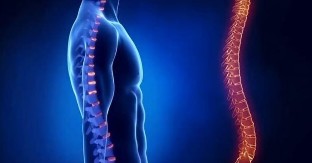
What is osteochondrosis?
Osteochondrosis of the spine is the cervical, thoracic and lumbar. Type of disorder is determined by the location of the altered tissue. On the basis of pathology lies the violation of the trophic intervertebral discs and vertebrae. This leads to a change in the normal structure of the cartilage. Due to the dystrophy of the cartilage of the disc loses its elasticity, changing consistency and shape. Shrinking the gaps between the vertebrae, and the affected segment of the spine loses stability.
Reduce the distance between the vertebrae, it is accompanied by tension of the muscles of the back, compression of the nerve roots, off-the-from the spinal cord. This explains the emergence of pain and neurological symptomatology in osteochondrosis.
Degeneration of the discs leads to a weakening of their outdoor fibrous rings. Therefore, in patients osteochondrosis often arise protrusion (bulging part of the disc) and the vertebrae hernia (the overhang of the disc nucleus pulposus into the spinal canal). Later, the pathology extends to the small joints of the vertebrae pillar, intervertebral volumes:
- appear bony growths of the vertebrae;
- the patient is hard to bend, stretch;
- forfeit the flexibility of the spine;
- appear subluxation of the vertebrae;
- bent the affected area of the spinal pillar (kyphosis, scoliosis).
Degenerative changes in cartilage and bone tissue are a normal consequence of aging. For several reasons the development of pathology may accelerate. 70% of patients with osteochondrosis of the — people older than 45 years. The early appearance of the pathology is associated with a poor physical preparation of children with overweight in adolescents.
Modern young people a lot of time spends behind the computer and the tv, without moving games, street walks and sports didn't know, what is it an osteochondrosis and how dangerous it is. A long stay in a sitting position helps to:
- violation of posture;
- the weakening of the muscles of the back;
- development problems with the spine.
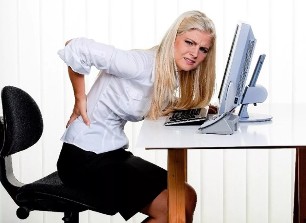
Causes of degenerative disc disease
The causes of the disease divided into 3 groups. The first has to do with increased load on the spine:
- overweight;
- heavy physical work (in particular the increase of cargo);
- professions that require long standing or sitting;
- wear uncomfortable shoes, high heels, purse on one shoulder;
- bad posture;
- underdeveloped muscle skeleton because of a sedentary lifestyle;
- congenital and acquired deformities of the spine;
- flat feet.
The second group includes the internal causes:
- heredity;
- age-related changes;
- metabolic disorders;
- intoxication of the organism;
- nervous strain, stress;
- serious somatic diseases;
- hormonal changes (e.g. during pregnancy, menopause);
- autoimmune disease of the connective tissue.
The third group consists of external reasons:
- injury to the spine;
- lack of vitamins and minerals (especially vitamins D, C, group, calcium and phosphorus);
- bad habits;
- sleeping on an inappropriate mattress and pillow.
Professional sport is becoming a cause of premature aging of the intervertebral discs for each of the 20-th of the athlete. The process of degeneration accelerates after the abrupt termination of the training.
Symptoms of degenerative disc disease
Osteochondrosis — a chronic disease that is carried by alternating periods of exacerbation and remission. The development of acute symptomatology contribute:
- excessive physical load;
- overwork;
- hypothermia;
- injury;
- tremor of the body and the influence of vibration.

The clinical picture during an exacerbation depends on the localization of the affected cartilage, the presence of complications.
- For cervical degenerative disc disease is a typical pain in the neck, on the hands, stiffness of movements, numbness of fingers, pain of the head. If you squeezed the vertebral artery, the condition of the person worsens: appear with a throbbing headache, severe dizziness, reduced hearing, arise "flies before my eyes", possible fainting.
- Symptoms of degenerative disc disease of the thoracic department of the: troubled by an acute or aching pain in the back, feel that they are "staked in the chest", pain in the heart and internal organs, difficulty breathing (hard to breathe a full breast due to muscle stiffness and pain).
- When lumbar osteochondrosis pain occurs in the lower back, sacrum and legs, increasing during walking. Happen to back pain in the lower back during physical exertion, numbness of the lower extremities. Appear to dysfunction of the urinary organs (pain, disorders of the urinary function, problems with potency in men, ovarian failure in women). In the period of remission is ill feels a light pain that only occurs under the influence of provoking factors (load, forced uncomfortable posture and other).
Osteochondrosis and VSD
Pathology in the intervertebral joints often lead to interference of the nerve roots, blood vessels, which are the breeding ground of the brain to irritation of the vegetative nodes, which are responsible for the functioning of the internal organs. These factors become the cause of violations by the cardiovascular and nervous system. In 8 of 10 patients osteochondrosis develops a syndrome of vascular dystonia (VSD), the symptoms of which:
- sudden changes in blood pressure;
- headaches;
- nausea and vomiting;
- sleep disorders;
- shortness of breath;
- chills or hot flushes;
- the overall decline forces.
In severe cases, possible loss of consciousness.
In 95% of cases is a clear link between the wellbeing of the patient and the weather conditions.
Described symptoms accompany not only osteochondrosis. Patients with a similar clinical picture in need of examination to exclude somatic and endocrine diseases.
The diagnosis of degenerative disc disease
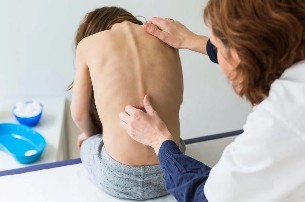
The patient should know that doctor treats degenerative disc disease, to immediately get to the front desk to the desired specialist. Problems of the spine deals with a neurologist, to which it is necessary to handle when you pain in back, neck, lower back. Examination of patients with suspected osteochondrosis occurs gradually and can last from 1 to 7 days:
- survey;
- external control of the spine in different positions of the body (lying down, sitting, standing);
- palpation of the vertebrae pillar, located in the vicinity of the soft tissue;
- the definition of the amplitude of movements in different parts of the spine;
- instrumental studies: computed tomography, magnetic nuclear resonance, radiography.
In challenging the diagnosis carried out by the specific warehouse of the blood vessels and peripheral nerves.
How and what to treat degenerative disc disease?
Treatment of degenerative disc disease of the spine is long and requires a comprehensive approach. In the therapy of applied medicine and rehabilitation methods — it is designed an individual approach to each patient. The selection of the treatment scheme depends on:
- the severity of the pathology;
- the condition of the patient;
- the presence of complications of the disease.
An important condition for the effective treatment of degenerative disc disease – a step-by-step. The main goal of therapy during exacerbation of the disease — the removal of pain. The patient is advised to relax, wear special corsets and collars for unloading of the spine. Apply indoor and outdoor treatment medicines, held physiotherapy. The next step is to carry out activities, which have warned new exacerbation:
- therapeutic physical training (drug exercises for strengthening the muscular corset and the formation of correct posture);
- therapeutic massage;
- manual therapy;
- reflex therapy, etc.
Treatment treatment
Drug therapy in osteochondrosis of the is focused on removing pain, cartilage regeneration, improvement of microcirculation and trophic in the affected segments of the spine. Sick prescribe:
- anesthetic: nonsteroidal anti-inflammatory drugs (pills, injections, ointments, etc.);
- muscle relaxants to relieve muscle tension, which will appear in osteochondrosis of the and causes pain;
- the local analgesic treatment – compresses with novocaine, medicinal blockade pepper band-aid and so on;
- chondroprotectors, which support the regeneration of the cartilage;
- vitamins and minerals in tablets or in the form of solutions for injection;
- vasodilating preparations for the removal of reflex spasm of blood vessels;
- medication to the normalization of metabolism in the tissues.
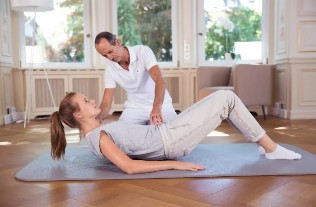
Therapeutic physical education
Therapeutic physical training or exercise therapy in osteochondrosis helps to build a strong muscle corset, which ensures uniform distribution of the load on the spine. Thanks to the regular activities:
- improves blood circulation and nutrition of tissues, intervertebral discs;
- it is manufactured of the correct posture;
- increases range of motion in the spine.
Breathing exercises eliminate muscle spasms and pain, and swimming relaxes and relaxes the spine.
Physiotherapy and classes on rehabilitation exercise machines are carried out after remitting acute symptomatology of the disease.
The basic rules of physical activity:
- regularity (exercise is necessary to do daily);
- gradualism (first lessons last 10-15 minutes, each week is the need to increase their duration to 5 minutes, for a period of 2 months);
- moderation (after the exercise the patient feels mild fatigue, fatigue after exercise – a sign of an incorrect approach to the LTV).
Exercises may not deliver the discomfort. Upon the occurrence of back pain lessons is the need to stop and agree with the doctor the possibility of further teaching.
Auxiliary methods of treatment of degenerative disc disease
Comprehensive conservative treatment of degenerative disc disease, in addition to medical therapy and exercise therapy, includes:
- massage: helps to relieve the spasms of the muscles, remove the pain and improve the blood circulation in the tissues;
- manual therapy;
- physical therapy: whirlpool, laser, magnetic therapy, the effect of ultrasound;
- spinal traction on a special device;
- reflexology and acupuncture: impact on the reflex zones and active points, relaxes and relieves back pain.
Prevention of degenerative disc disease
At an osteochondrosis it is necessary to reduce the load on the spine:
- wear comfortable, good quality shoes;
- avoid prolonged stay in an uncomfortable position, or in position in a standing position;
- control body weight;
- adhere to proper posture;
- not lift weights, and if it is necessary to evenly use both hands for the weight distribution.
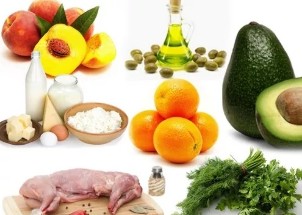
It is worth it to take care of the physical condition and strengthen the muscles of the back, than you daily spo-firming charging, exercise in the pool, yoga.
An important part of prevention of degenerative disc disease is diet. It is necessary to include into the diet:
- dairy products;
- fish;
- broths;
- jelly;
- jelly;
- leafy vegetables;
- greens;
- olive and butter;
- eggs.
From carbonated drinks, alcohol, strong coffee, fatty meats and salty foods should be removed.
Overall diagnose osteochondrosis is not so simple: have a separate flag, often x-ray detects a problem in the spine in people who have never experienced long-term back pain. The first bells for a reason to visit a doctor can be severe pain of the head, jumps of pressure, heaviness in the muscles, dizziness when turning the head. Often disorders of posture are reflected in the appearance of: slouching rotation and a pronounced hump, heavily curved shoulders and the entire firm stomach.
































